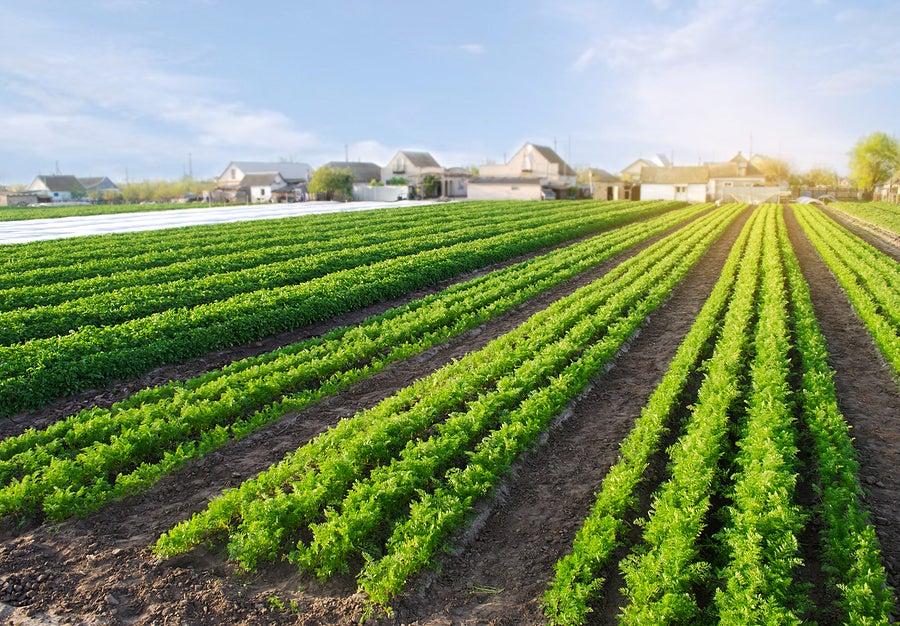Contents
The U.S. Department of Agriculture (USDA) is actively working to tackle the growing threat of per-and polyfluoroalkyl substances (PFAS), commonly known as “forever chemicals,” within the agricultural sector.
These chemicals pose significant risks to food production and farmland, leading the USDA to craft a detailed research roadmap to prevent and mitigate contamination.,
A Growing Concern: The Impact of PFAS on Agriculture
PFAS have become a major concern for farmers, with numerous reports of health issues and livestock deaths directly linked to contamination. In some regions, farms have even been forced to close due to the discovery of these hazardous chemicals.
This problem arises primarily from the spreading of biosolids, which are byproducts of wastewater treatment. These biosolids can be contaminated by industrial manufacturing, leading to PFAS infiltrating the soil.
The Agricultural Research Service (ARS), a branch of the USDA, recently hosted a three-day workshop involving over 150 experts from different sectors, including universities, state agencies, and other interagency researchers. This collaborative event aimed to outline key solutions for managing PFAS on agricultural land, focusing on both detection and prevention.
Understanding the Challenges: Detecting and Containing PFAS
One of the biggest challenges in addressing PFAS contamination is the lack of comprehensive data on the extent of pollution.
Current scientific knowledge is limited, leaving farmers with few effective options for remediation. According to Marlen Eve, the acting assistant administrator of the Natural Resources and Sustainable Agricultural Systems program, PFAS is primarily an environmental hazard unrelated to agriculture.
Nevertheless, when detected, farmers require efficient and affordable ways to manage these chemicals in their soils and waters.
In response, the ARS’s roadmap aims to identify innovative and creative strategies to address this escalating problem.
Dr. David Knaebel, the senior management advisor for ARS, emphasized the need for “innovative ways to mitigate and remediate” the issue, indicating that the USDA is committed to closing the gap between PFAS challenges and effective solutions.
The USDA’s Roadmap: Key Solutions and Future Steps

The USDA’s research roadmap seeks to provide actionable solutions. Among the suggested strategies is the development of advanced detection methods to identify PFAS contamination early. Additionally, the roadmap includes the creation of tools designed to halt the spread of PFAS before they can cause damage to soil and agricultural productivity.
Data standardization is another critical focus. By establishing consistent metrics, researchers hope to better assess and manage the threat posed by PFAS. There is also a push to explore methods that could potentially remove PFAS chemicals from manufacturing processes altogether, thereby reducing the risk of contamination at its source.
Collaboration and Future Goals: Bringing Solutions to Life
The USDA’s workshop was not just about generating ideas; it laid the groundwork for future partnerships. By forming alliances with other agencies, academic institutions, and industry experts, the USDA aims to translate these proposed solutions into reality. Particularly in areas where PFAS has severely impacted agriculture, the roadmap intends to support farmers with new, practical tools.
Dr. Knaebel highlighted that the workshop has given ARS and its partners renewed hope and motivation to confront these challenges head-on. By focusing on agriculture-specific problems linked to PFAS, the USDA’s efforts represent a significant step toward safeguarding the future of American farming.
The Bigger Picture: Why Addressing PFAS Matters

PFAS are not just an agricultural issue; they have widespread implications for both human health and the environment.
These chemicals are known for their persistence, earning the nickname “forever chemicals” because they don’t easily break down. As PFAS continue to accumulate in the environment, their potential impact grows, making it essential to develop effective detection and prevention strategies now.
By leading the way in PFAS research and response, the USDA aims to protect food safety, support agricultural productivity, and prevent further environmental damage.
The roadmap is just the beginning of a longer journey toward a cleaner, safer agricultural future.
The USDA’s initiative to create a PFAS research roadmap is a vital move in addressing the contamination of farmland. As the roadmap takes shape, farmers, researchers, and Policymakers will play crucial roles in implementing effective solutions.,
With collaboration and Continued research, there’s hope that the threat of PFAS in agricultre can be significantly reduced, ensuring the long-term safety and sustainability of food production.
